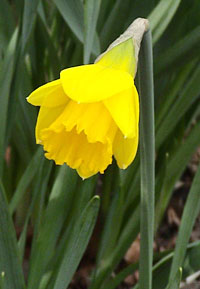


 The gardens and the people working them have grown in maturity and confidence!
The gardens and the people working them have grown in maturity and confidence!
Allotment 1
In the winter our friend Dave showed us how to layer our hawthorn hedge. We all had a go and the result was brilliant. We also created a flower bed 1.20 meter wide all along the hedge. The rest of the allotment was used for our main crop potatoes. When they were harvested, we weeded the area and covered it with carpets. The coming year we will grow are 'low maintenance fruit- vegetables' ie courgettes, broadbeans, sweetcorn and some butternut squashes, this way we reduce the working area but still get the harvest.
Allotment 2
This allotment has seen no changes. We still have our shed in which we do the 'admin' (big word for writing in the diary about what we have done and looking on the white board to check what jobs need doing during the gollowing week). The greenhouse has been very productive over the winter months as we planted some winter density lettuces, some curly endive, parsley, chives and a red leaved lettuce. This meant that many of us had fresh lettuce all the way through the winter.
The fruit trees (mainly apple and plum) will give us pretty blossom in spring, shade during the summer and wonderful produce in autumn. We will keep the large grassed area as a playing area for the children, this really is our social area with lovely picnics, BBQ's and games. We had some fantastic sack races during our summer games day, where we saw father and daughter Thomas battling for the honour. Andy won!
This year allotment 3 was our Root allotment. On the right hand side we all had our own beds and planted early potatoes (Pentland Javelin). Some people cultivated it the conventional way, two rows of 13-15 potatoes, and some experimented with the no dig method, using straw to exclude the light. I do not think the results were any different as we all had a wonderful crop. The main difference was that the no dig method had been easier on my back so a good idea for those who find digging painful. In March-April time, everyone pre-sowed Musselburgh leeks in the green house. These were transplanted into the beds, immediately after the potatoes were harvested. The same went for brassicas. Due to the fact that different members wanted different sizes of leeks, it was decided that each member would grow their own leeks to avoid disappointment. This worked quite well, and some of us are still eating leeks in February. The brassicas were grown as a companion with the leeks, they were shared by all but each member had a different variety in their bed.
On the left hand side we grew carrots, beetroot, onions, parsnips, together with a variety of lettuces. Again, the wet weather was good for the carrots and beetroot.
Allotment 4.
This was our new acquisition. The previous tenant fled from it as the bindweed was rampant. We liked it mainly because of its location, it would give us a walk way through to allotment 6. However, as most of us had not got the energy anymore to have hours of painstaking digging and root picking, I decided to cover it with horse manure and then excluded any light by putting carpets on top. It was not necessarily a pretty sight early in spring but all that changed in the summer when the whole allotment was turned into a pumpkin and squash patch. It looked lovely. Hundreds of wonderful fruit. From the very well known ' Jack o Lantern' pumpkin to adorn our houses for harvest festivals and haloween, to the butternut squashes, the bright orange, onion shaped Uckri and different types of courgettes. The wet summer really worked a treat for them. The keeping quality was not as good as in previous years but I was still eating butternut squash in February 2005. (and how lovely it was too). When all the fruit was harvested, we lifted the carpets and picked up all the roots that by now were laying on top of the soil, just underneath the carpet. We dig it over and found a wonderful texture and good quality soil. Great for next years root vegetables.
Allotment 5.
This was treated just like allotment 4. Horse manure and carpets. We took the carpets up in June when we transplanted sweetcorn. Unfortunately, this year was not very good for this vegetable. The cobs were not very well developed, and those that were tasted very starchy. Thank goodness for our new 'sister project' The Pecking Hens. A few members of our group (and two non-members) have set up a chicken co-op on the other half of allotment 5.
They own 15 hens and each member has a day allocated to feed and look after the 'girls'. They can take their 12 eggs and any excess eggs are sold to the public to pay for the feed. This group has been very handy for the Shared Garden Project as all left over greens and weeds as well as sweetcorn etc go straight to the hens. Their manure has been brilliant to get the compost heap started!
Allotment 6.
Has been well cared for this year. We planted a wide variety of beans, peas and mangetous, lettuces of all colour and size and as a permanent feature this allotment had a great variety of pears, apples and plums.
After 3 years we have been able to virtually eradicate the bindweed, so after the harvest of the annual produce, we decided to turn this allotment into a fruit only allotment.
During the autumn and winter we have planted: 3 beds of raspberries, 3 beds of strawberries, 1 bed of rhubarb, 1 bed of Red Currants, 1 bed of Gooseberries and 2 beds of black currants. We still have a willow patch for coppices, an area to make our liquid manures next to our nettle and our comfrey patch. We also acquired a peach, walnut and greengage tree, we now just have to wait and see if they will enjoy the weather in the Midlands and give us some variety in produce. This allotment should be low maintenance, apart from the occasional weeding, netting and harvesting. I'll keep you up to date if the plan has worked...!
As you can see we now have quite a large area to cultivate. We have 15 families involved who come 2 hours per week. One family consists of 5 children using these 2 hours as part of their home education program. So our age group has widened from 4 to beginning 60 ies and we all do what we can depending on our abilities.

| home | news | events | support | background | press |
| organic | bio-dynamic | recipes | books/links | images | members |
Visit our online shopping centre with over 150 retailers |
|||||